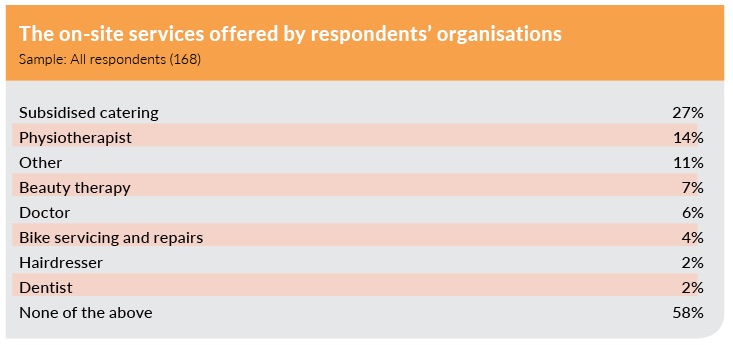
EXCLUSIVE: Almost two-thirds (61%) of employer respondents offer flexible-working initiatives, compared to 54% in 2016, according to research by Employee Benefits and Staffcare.
The Employee Benefits/Staffcare Benefits research 2017, which surveyed 271 employer respondents in February-March 2017, also found that extra holidays for long service or life events (53%), retail and leisure discounts (49%), enhanced parental leave (36%), and dining cards (34%) also feature in the top five lifestyle benefits provided by respondents.

Over the years, extra holiday for long service has consistently appeared in the list of respondents’ most commonly offered core benefits.
While the proportion of respondents offering enhanced parental leave and flexible-working arrangements has increased slightly over the last year, there has been no significant rise in the proportion of respondents providing eldercare and emergency care support. Meanwhile, 15% of respondents offer emergency childcare as a benefit, with the majority of these respondents providing it as a core benefit for all staff (81%).
A higher proportion of those respondents offering dining cards, as well as retail and leisure discounts, are doing so on a voluntary basis. This year, 64% of respondents that offer dining cards do so through their voluntary benefits scheme, compared to 32% in 2016.
Although 52% of respondents that provide retail and leisure discounts now do so as a core benefit to all staff and 46% do so through their voluntary benefits programme, 70% of respondents that offered this benefit in 2016 provided this as a core benefit for their entire workforce and 21% did so on a voluntary basis. While not directly comparable, these were also the key ways in which respondents offered retail and leisure discounts to staff back in 2009 and 2013; 23% of respondents to the Benefits research 2009 included retail and dining discounts within their voluntary benefits programme, rising to 32% in 2013, while 16% included these discounts within their core benefits package for all staff in both years.

More than a quarter (27%) of respondents’ organisations provide subsidised catering for employees. This was also the most frequently offered on-site service among respondents in 2016 (26%).
The proportion of respondents providing on-site services for employees, however, remains relatively low. This may be due to the space that is required to do so or employers’ priorities when it comes to the ways in which they choose to invest in their workforces’ health and wellbeing.